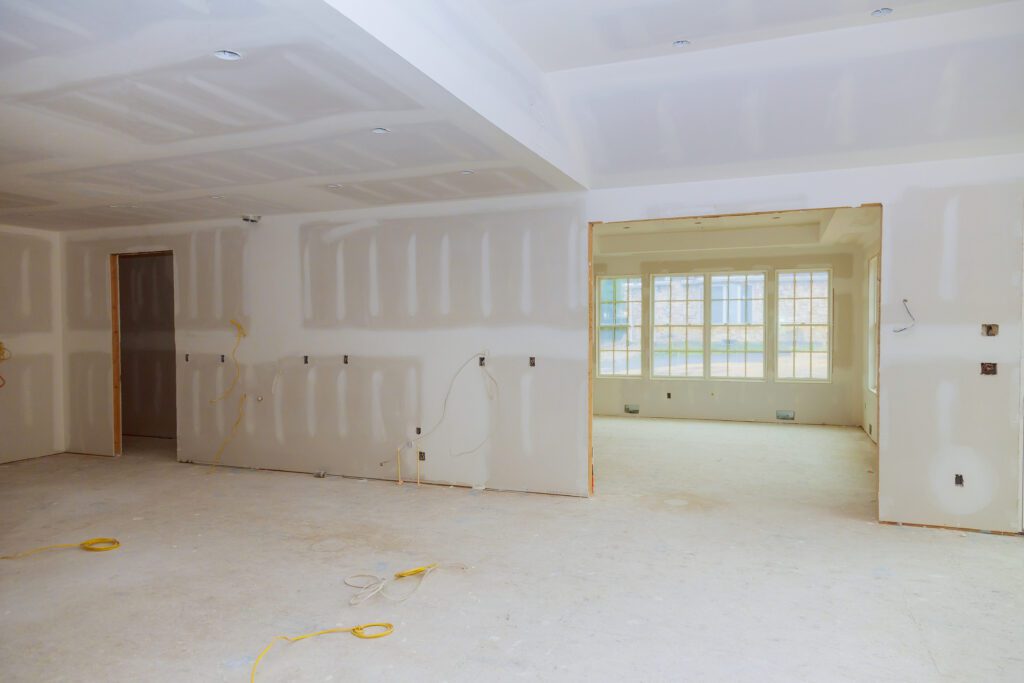Did you know that over 50% of homeowners regret DIY-ing their whole house renovations? Before grabbing that toolbox, consider the pros and cons carefully. While saving money and gaining a sense of accomplishment are enticing benefits, hidden expenses and project delays can quickly turn your dream renovation into a nightmare. Stay tuned to make an informed decision before picking up that hammer.
Potential Savings of DIY Renovation
Lower Cost Materials
When DIY renovating, consider using reclaimed materials like wood or bricks from salvage yards for a fraction of the price. Opt for discounted tiles or flooring from clearance sales to cut costs significantly.
Seek out budget-friendly alternatives such as laminate countertops instead of expensive stone options, or vinyl flooring that mimics the look of hardwood at a lower price point. These choices can help you achieve a stylish finish without breaking the bank.
Cost Comparison: DIY vs. Hiring Professionals
By taking on a DIY home renovation project, you can save a substantial amount compared to hiring professionals. For instance, labor costs typically make up a significant portion of renovation expenses, which can be eliminated by doing the work yourself.
When you opt for DIY, you have more control over the budget and can choose cost-effective solutions for each aspect of the renovation. This flexibility allows you to allocate funds wisely and avoid unnecessary spending.
Achieving Desired Results on a Budget
To achieve desired results while sticking to a budget, prioritize tasks that have the most impact. Focus on projects that add value to your home, such as painting, upgrading fixtures, or refinishing cabinets, which can transform the space without a hefty price tag.
Consider repurposing existing furniture or decor items to reduce expenses. A fresh coat of paint or new hardware can breathe new life into old pieces, giving your home a refreshed look without the cost of buying new.
Flexible Project Timeline
Personal Schedule
Set your own pace for a DIY house renovation to align with personal commitments and schedules. This flexibility allows you to work on the project when it best suits you, ensuring minimal disruptions to daily life.
Adjust the renovation schedule based on the complexity of tasks and the availability of resources. By doing so, you can allocate more time to intricate projects that require attention to detail while completing simple tasks efficiently.
Task Prioritization
Prioritize renovation tasks based on convenience rather than external deadlines. This approach enables you to focus on completing essential projects first, ensuring the smooth progression of the renovation process.
Pros:
- Allows flexibility in managing personal commitments
- Enables efficient allocation of time based on project complexity
- Prioritizes tasks for a streamlined renovation process
Cons:
- May lead to delays if not managed effectively
- Could result in extended project timelines if tasks are not prioritized correctly
Effective Communication
Maintain great communication throughout the renovation process to ensure all involved parties are informed about project timelines and progress. Clear communication helps prevent misunderstandings and delays, fostering a collaborative and efficient work environment.
Hidden Costs to Consider
Permits and Inspections
Unexpected expenses can arise during a DIY whole house renovation, especially when it comes to permits and inspections. Many homeowners overlook the costs associated with obtaining necessary permits for structural changes or major renovations. Failure to comply with local regulations can lead to fines or even having to undo completed work.
Consider the timeline needed for permit approvals as this can delay the project significantly. Hiring professionals to handle this aspect can save time and ensure compliance with building codes. Inspections throughout the renovation process may incur extra fees but are crucial for ensuring the safety and quality of the work.
Tools and Materials
When embarking on a DIY whole house renovation, individuals often underestimate the cost of tools and materials required for the project. While labor costs are saved by doing the work oneself, investing in high-quality tools and materials is essential for achieving professional results.
Homeowners should budget for items such as power tools, safety equipment, paint, flooring, fixtures, and more. Researching prices and comparing options can help in estimating the total expenses accurately. Moreover, unexpected issues may arise during the renovation, necessitating additional tools or materials not initially planned for.
Mistakes and Rework
One of the significant concerns with DIY whole house renovations is the potential for mistakes that could lead to costly rework. Inexperienced individuals may make errors in measurements, installations, or design choices, resulting in the need to redo certain aspects of the project.
To mitigate this risk, homeowners should allocate a portion of their budget for possible rework expenses. Taking time to plan each step meticulously and seeking guidance from professionals or online resources can help minimize mistakes. Communication with contractors or consultants for advice on complex tasks can also prevent costly errors.
Necessary Tools for DIY
Essential Tools
When embarking on a DIY home renovation project, having the right tools is crucial for success. Some essential tools include a hammer, screwdriver set, measuring tape, level, and utility knife.
Power Tools
For more complex tasks, power tools like a cordless drill, circular saw, and jigsaw are indispensable. These tools can significantly speed up the renovation process and ensure precision in cutting and drilling.
Safety Equipment
Safety should always be a top priority when undertaking a DIY renovation. Don’t forget to invest in safety equipment such as gloves, safety goggles, and dust masks to protect yourself from potential hazards.
Rental Options
For expensive tools that you may only need for a specific project, consider renting them instead of buying. This can help you save money while still having access to the necessary equipment for your renovation.
Importance of Having the Right Tools
Having the right tools for a DIY renovation is essential for project efficiency and quality results. Using the correct tools not only makes tasks easier but also ensures that the work is done correctly the first time.
Examples of Tool Applications
- A hammer is essential for tasks like driving nails or removing old fixtures.
- A cordless drill is perfect for installing shelves, cabinets, or hardware.
- Safety goggles are crucial when working with power tools to protect your eyes from debris.
Extended Time for Completion
Inexperience
DIY projects often take longer to complete due to inexperience. Without the expertise of a professional contractor, individuals may encounter challenges that slow down the renovation process.
Juggling Responsibilities
Balancing multiple responsibilities alongside a DIY renovation project can significantly impact project timelines. Contractors are dedicated solely to the job, ensuring efficient progress compared to individuals with other commitments.
Unforeseen Challenges
Delays in DIY renovations can also arise from unforeseen challenges and learning curves. Unlike a professional company or contractor, DIYers may need extra time to overcome unexpected obstacles during the renovation process.
Quality Concerns in DIY Projects
Skill Assessment
When tackling a whole house renovation project, it’s crucial to assess your skill level for different tasks. Some renovations, like painting or minor repairs, may be suitable for beginners. However, complex tasks such as electrical work or plumbing require advanced skills.
It’s essential to acknowledge that the lack of expertise in certain areas can result in subpar results. For instance, improper installation of fixtures or incorrect measurements can lead to costly mistakes. Therefore, it’s vital to be honest about your capabilities and seek professional help when needed.
Research and Practice
One way to ensure quality in DIY projects is through thorough research and practice. Before starting a renovation task, take the time to educate yourself on the proper techniques and tools required. Watch tutorials, read guides, and seek advice from experts to enhance your knowledge.
Practice plays a significant role in improving the quality of your work. Start with small projects to gain confidence and experience before moving on to more challenging tasks. By practicing regularly, you can refine your skills and minimize the risk of errors during the renovation process.
Estimating DIY Project Duration
Breakdown
Breaking down a DIY home renovation project into manageable phases is crucial for accurately estimating the duration. Begin by dividing the project into tasks such as demolition, electrical work, plumbing, painting, and finishing touches. Each phase should have a clear start and endpoint to track progress effectively.
Reference
Drawing from past experiences or similar projects can provide valuable insights into realistic timeframes for each phase. For instance, if a friend recently completed a similar renovation, inquire about the time it took them to finish specific tasks. Online resources and forums dedicated to home improvement can offer detailed timelines based on different project scopes.
Buffer Time
Incorporating buffer time into your project schedule is essential to accommodate unexpected issues that may arise during the renovation. Unforeseen challenges like structural damage, permit delays, or supply chain disruptions can significantly impact the timeline. By allocating extra time for contingencies, you can mitigate stress and ensure a smoother renovation process.
Final Remarks
In weighing the pros and cons of DIY-ing a whole house renovation, you’ve delved into the potential savings, flexible timelines, hidden costs, necessary tools, extended project durations, and quality concerns. While DIY projects can save you money and offer flexibility, don’t overlook the hidden costs, time commitment, and quality trade-offs that come with it. Remember to plan meticulously, invest in quality tools, and be prepared for unexpected challenges along the way. Your decision should align with your skill level, available time, and willingness to learn throughout the process. Whether you choose to DIY or hire professionals, ensure your choice suits your needs and budget for a successful home renovation project.
Transform Your Home with Red White & Blue Construction
Is your home in need of an update? Let’s make it happen! At Red White & Blue Construction, we specialize in whole house renovations that breathe new life into every corner of your home. Whether you’re in Lafayette, CA, or anywhere in the Bay Area, we’ll help you create a space that reflects your style, meets your needs, and increases your home’s value.
Looking to modernize your kitchen, refresh your bathrooms, or open up your living spaces? Maybe you want a complete makeover that blends functionality with beauty. We’ve got you covered! From design to construction, we handle every step with care, ensuring your renovation meets the highest standards for quality and compliance.
We’re proud to be known throughout the Bay Area for our top-notch craftsmanship, transparent pricing, and personalized service. Renovating your entire home can feel overwhelming, but with Red White & Blue Construction, the process is easy and stress-free. From flooring and cabinetry to electrical, plumbing, and more—we take care of every detail. Whether you want something bold and modern or cozy and traditional, we’ll bring your vision to life.
Don’t settle for a home that no longer fits your needs. Let’s transform it into the perfect space for you and your family. Contact Red White & Blue Construction today, and let’s make your dream home a reality!
Disclaimer
The materials available on this website are for informational and entertainment purposes only and not to provide advice. You should obtain advice concerning any particular issue or problem from a professional. You should not act or refrain from acting based on any content included in this site without seeking legal or other professional advice. The information presented on this website may not reflect the most current building developments. No action should be taken in reliance on the information on this website. We disclaim all liability concerning actions taken or not taken based on any or all of the contents of this site to the fullest extent permitted by law.





